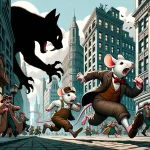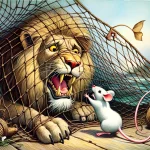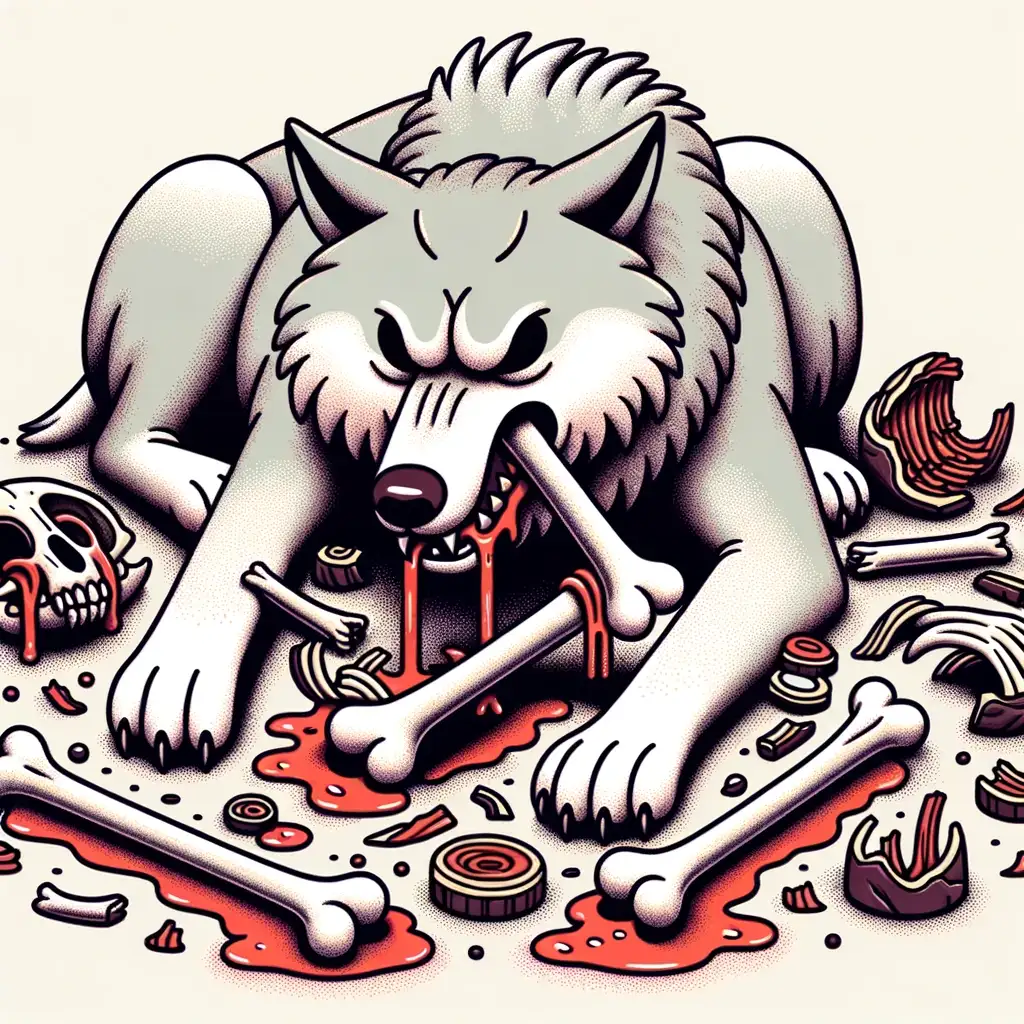
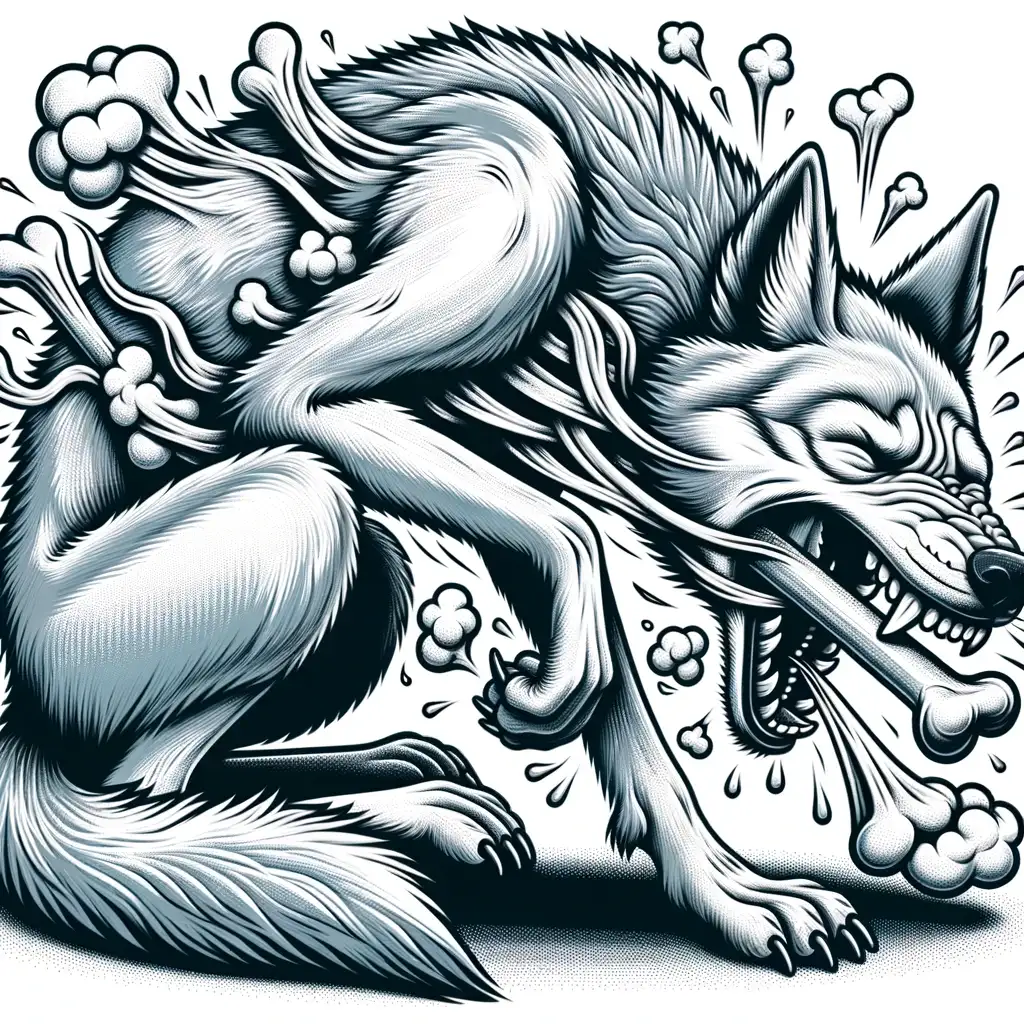
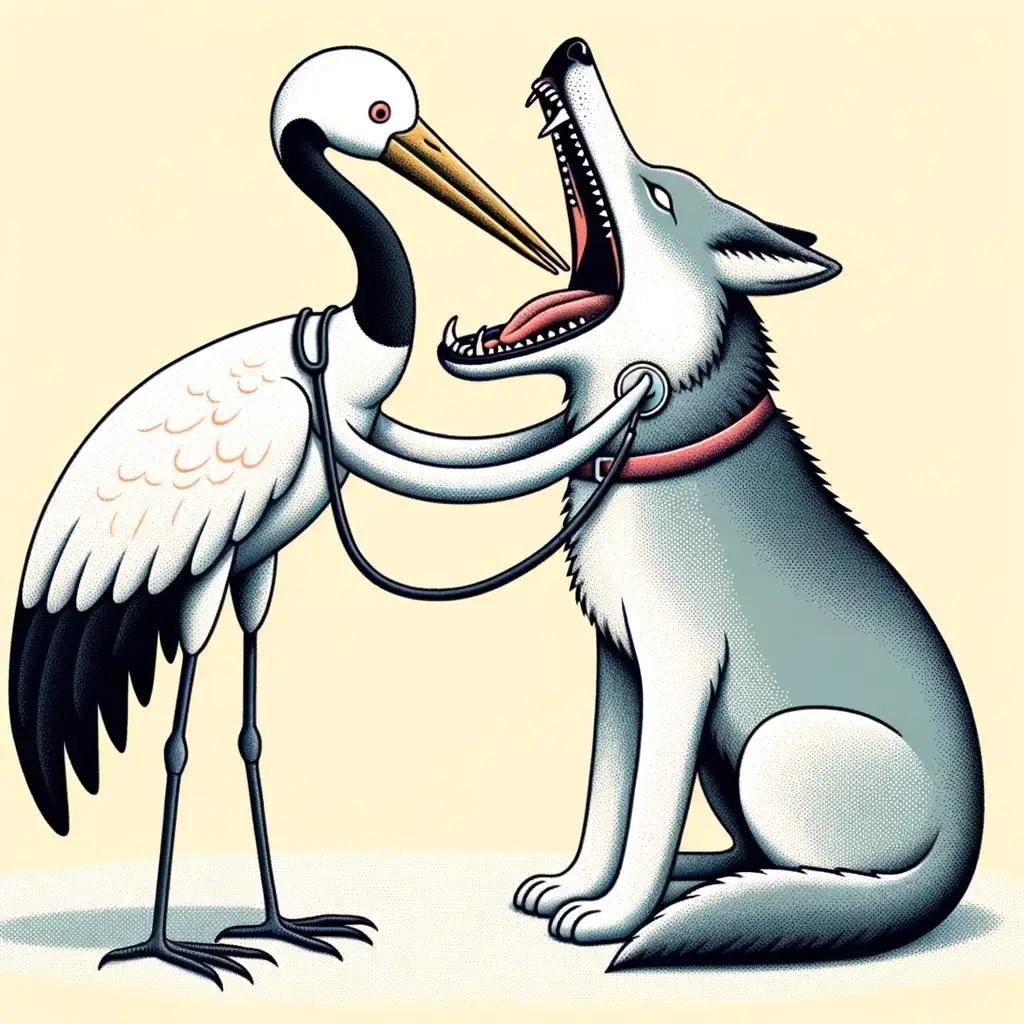
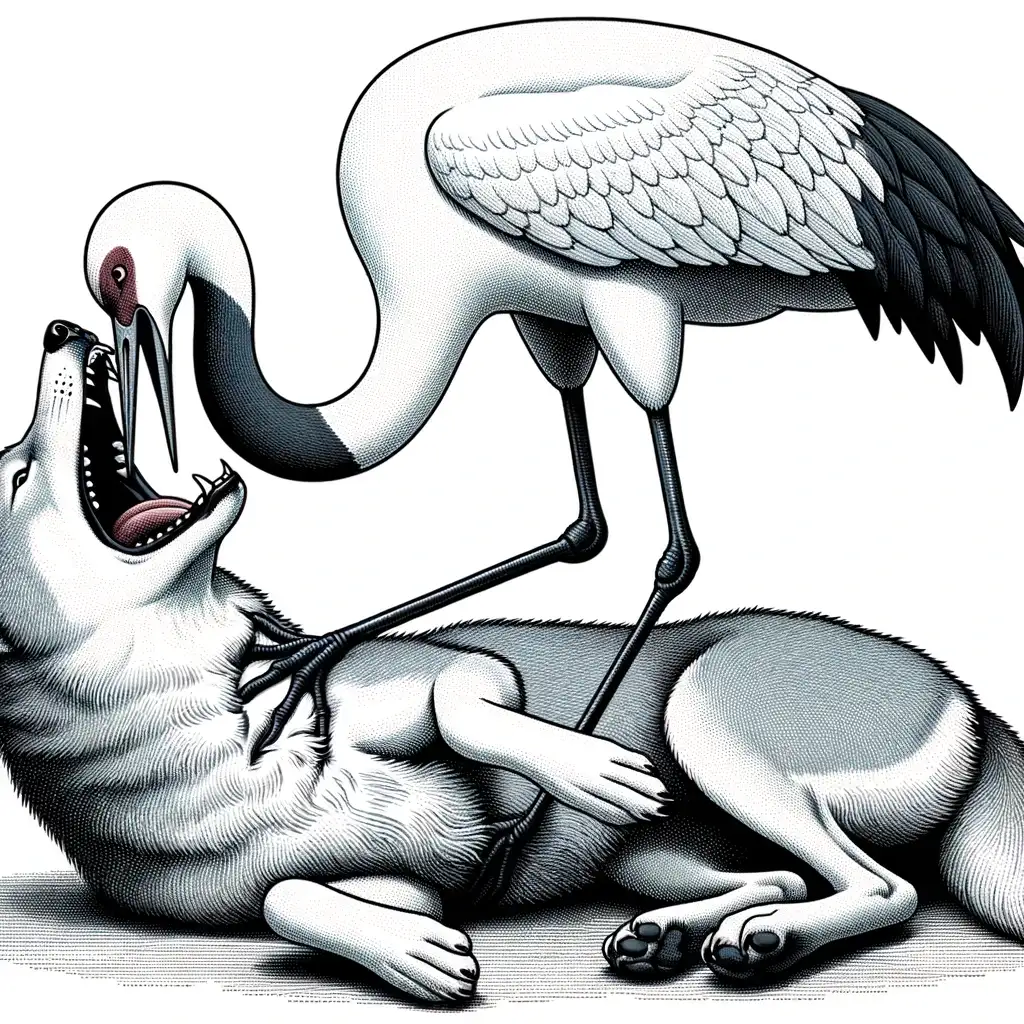
The Wolf and the Crane – Aesop’s Fables
Get ready for a fascinating journey into the shadowy realms of Aesop’s fables, where animals speak profound wisdom and humans listen to learn. This time, we’re diving deep into the enchanting forest of Aesop’s world to explore one of his lesser-known but equally impactful tales – ‘The Wolf & the Crane.’ This intriguing fable offers a unique outlook on the concept of gratitude and the often missed intricacies of alliances.
A Glimpse into Aesop’s Forest: The Intriguing Tale of the Wolf & the Crane
Within the dense foliage of Aesop’s forest, there’s a story that whispers a tale of an unlikely friendship, a life-saving favor, and a harsh lesson learned. It’s the compelling narrative of the Wolf and the Crane. As the story goes, a greedy wolf, after feasting on his prey, gets a bone lodged in his throat. In desperate need of help, he strikes a deal with a crane promising a handsome reward in return for the crane’s assistance to remove the bone.
Despite knowing the wolf’s reputation for cunning and deceit, the crane, moved by compassion and the promise of a reward, risked her own safety to save the wolf. With the deft use of her long beak, the crane dislodged the bone, freeing the wolf from his discomfort. However, when the crane asked for her promised reward, the wolf, showing his true colors, scoffed at her and sent her away, stating that she should be grateful he didn’t eat her.
The Unlikely Alliance: Interpreting the Wisdom of the Wolf & the Crane Fable
This intriguing tale of the wolf and the crane is rich in metaphorical wisdom that resonates across generations. At its heart, it speaks about the pitfalls of forming alliances without understanding the true nature of the ally. In the crane’s case, her compassionate nature and the prospect of a reward made her overlook the wolf’s inherent cunningness. She trusted the wolf, a known trickster, thereby putting her life in danger.
On the other side of the fable, the wolf’s character serves as a stark reminder of the consequences of ingratitude. Despite being saved from a life-threatening situation, the wolf’s lack of gratitude led him to break his promise and threaten the very life that saved him. This behavior, while shocking, reflects the unfortunate reality of encounters with ungrateful individuals who forget the favors once their difficult times have passed.
The fable’s timeless narrative is not simply an animal tale but a mirror reflecting human behaviors and interactions. It reminds us to be discerning in our alliances, warning us that not all who promise rewards can be trusted. It also reinforces the important virtue of gratitude, emphasizing the repercussions of its absence. So, the next time you find yourself in the enchanting forest of Aosop’s fables, remember the Wolf & the Crane, and the precious wisdom it offers.

